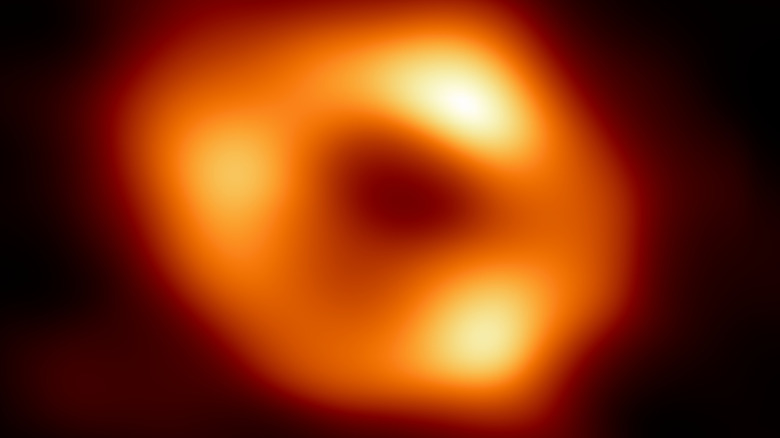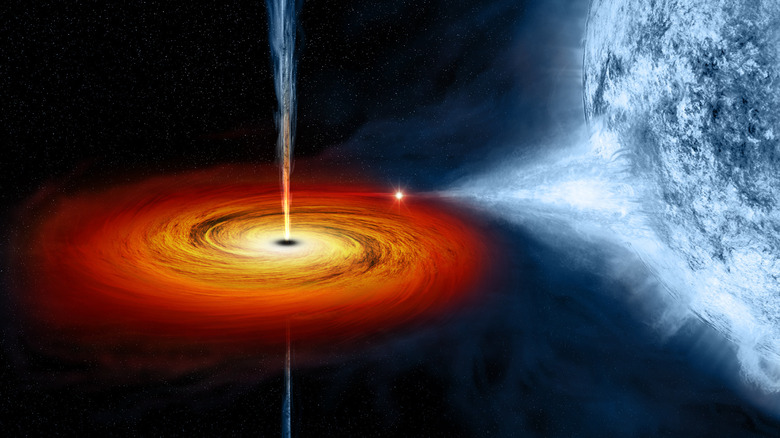Why We Can't Actually See A Black Hole
We now have not one but two photographs of objects previously considered impossible to image: black holes. In May 2022, astronomers revealed an image of the supermassive black hole at the center of the Milky Way, called Sagittarius A*, as a companion to the first-ever image taken of a black hole, the one at the center of galaxy Messier 87 in 2019. But, you might wonder, what are you actually looking at when you see these amazing images?
Black holes are small in size, ranging down in size to being as small as an atom, but they are tremendously dense and have a very large amount of mass (via NASA). As they are so dense, they warp space around them as Einstein predicted with the General Theory of Relativity –- because the fabric of spacetime is affected by gravity. Because black holes are so massive and so dense, they pull things into them, including matter such as the dust and gas that floats around in space. But the strange thing to imagine is that they can even pull light into them.
When anything passes a certain point near the black hole — called the event horizon — it is trapped inside and can no longer escape. That's even true of light. That's why black holes have their name, because they trap light.
This means that you can never actually see light coming from a black hole. The black hole itself is essentially invisible because there's no way for light to escape from it to be perceived.
How do we find black holes?
So if we can't see black holes themselves, how do we know they are there? And how can we possibly have pictures of them? The answer is that while the black hole itself is invisible, we can observe its effects on the matter around it.
Black holes were predicted to exist as far back as the 1930s, but the definitive proof of their existence arrived in 2015 when scientists observed two black holes colliding and observed gravitational waves created by this merger (via Washington Post). Scientists can see how stars and gas move in distant parts of the universe and infer that there must be a black hole present because of their movements.
Another way to observe black holes is to look for the energy they give off. When any material is drawn toward the event horizon, it rubs up against other material and gets hot, eventually creating a bright glow (via Astronomy.) It is this glow that the images of the two black holes capture.
"Although we cannot see the black hole itself, because it is completely dark, glowing gas around it reveals a telltale signature: a dark central region (called a "shadow") surrounded by a bright ring-like structure," the Event Horizon Telescope project, the group which produced the two pictures of the black holes, explains. "The new view captures light bent by the powerful gravity of the black hole, which is four million times more massive than our Sun."

